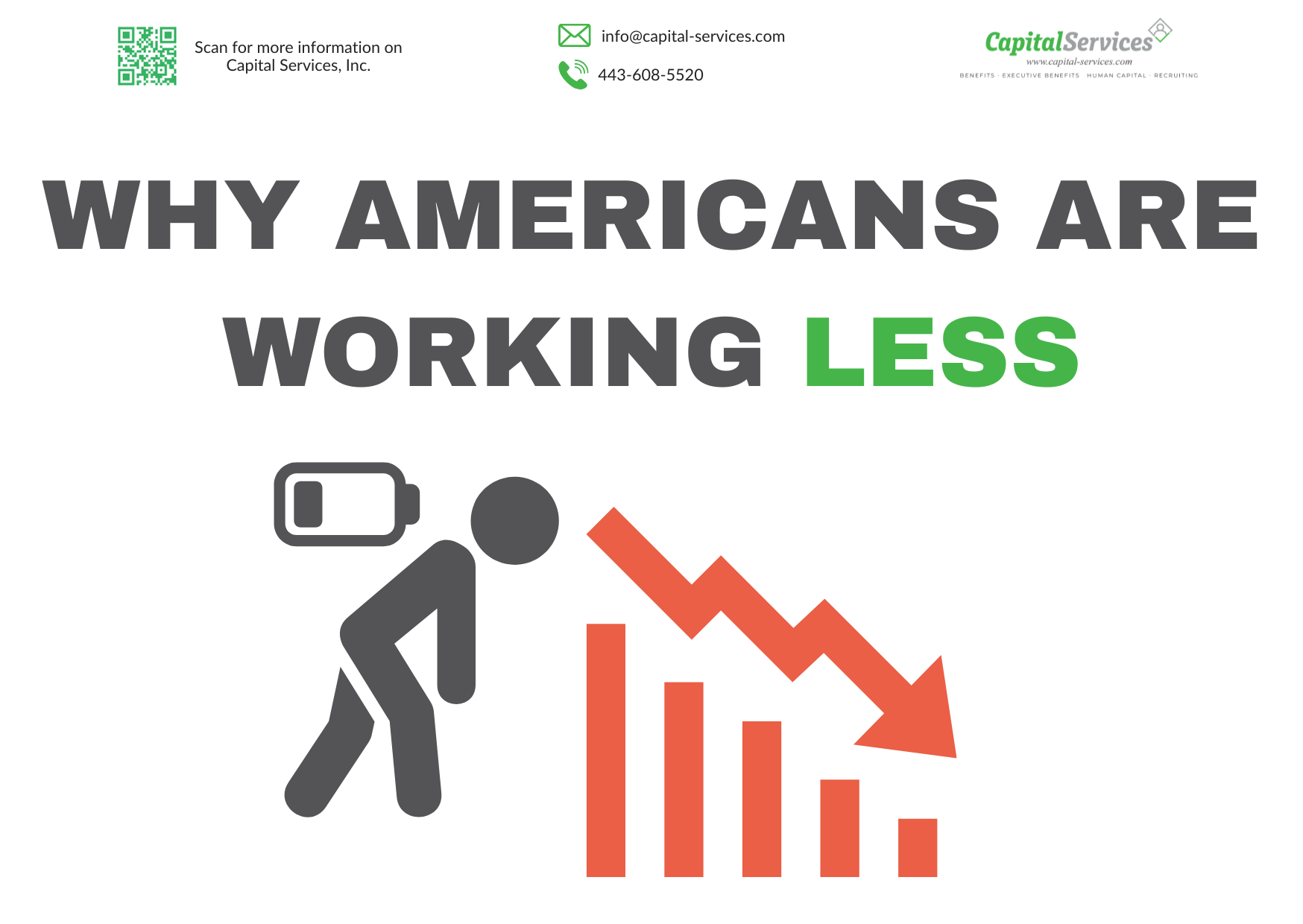
Why Americans Are Working Less—And What That Means for Employers Like You
There’s a quiet shift happening across America’s workforce and it’s one your executive team can’t afford to ignore. According to Gallup, the average full-time U.S. employee is now working 42.9 hours per week, down from 44.1 hours in 2019. At first glance, this may seem negligible. But zoom out, and you’ll see what this means: younger employees, in particular, are working nearly two fewer hours per week than they were five years ago. That’s the equivalent of taking two extra weeks off every year—and it’s a signal of something much deeper.
The Workforce Is Speaking. Are You Listening?
This drop in hours is not a fluke. It’s the result of a growing shift in priorities. Today’s employees—especially Millennials and Gen Z—value wellbeing and work-life balance more than ever. But there’s a catch: fewer hours don’t necessarily mean more productivity. In fact, employee engagement has plummeted to its lowest rate in a decade, with only 31% of U.S. workers feeling engaged in their jobs (Gallup, 2024).
Even more concerning?
- Workers under 35 are 5 points less engaged than the year before.
- Only 30% of employees say someone encourages their development at work.
- Just 46% know what is expected of them on the job.
- Burnout is surging, with over 50% of disengaged younger workers reporting frequent exhaustion and disconnection.
What we’re witnessing isn’t just a dip in hours—it’s a full-blown workforce detachment crisis.
The High Cost of Disengagement
Disengaged employees don’t just “check out”—they drain your business:
- They are 32% less likely to feel accountable for quality work.
- They are 74% more likely to be job hunting.
- And when they leave, they take morale, productivity, and institutional knowledge with them.
Meanwhile, a growing number of CEOs are reporting decreased confidence in their industries. The disconnect between macroeconomic productivity stats and real-life employee sentiment is stark—and for employers, dangerous.
Here’s the Truth:
Your business cannot sustain long-term success without engaged, healthy, supported employees. Full stop.
So, What Can You Do About It?
At Capital Services, we work with employers who are ready to stop the bleeding and start building. We help organizations of all sizes create engagement-first strategies through:
- Proactive leadership development and coaching
- Mental health and wellbeing integration
- Performance management reengineering
- Strategic benefits design aligned with employee priorities
- Culture audits and communication support
- Total compensation reviews that resonate with today’s multigenerational workforce
Case in Point: A Tech Company with 7,000 Employees Nationwide
One of our clients—a leading technology company—was facing a quiet quitting epidemic. Engagement scores were slipping. Collaboration was suffering. Productivity was inconsistent.
We stepped in with a phased solution:
- Redesigned their workspace to support hybrid collaboration and wellness
- Introduced flexible schedules with accountability tracking
- Conducted management coaching around empathy, clarity, and feedback loops
- Enhanced mental health benefits and normalized their use
- Built out a recognition system tied to culture and core values
The result?
- 26% reduction in voluntary turnover
- 41% boost in internal promotions
- Engagement scores jumped by 15 points in 12 months
- $2.3 million in productivity gains tied to retention and alignment
It’s Not About Working Harder. It’s About Leading Smarter.
Burnout isn’t just about too many hours—it’s about poor leadership, lack of trust, and outdated workplace models. Today’s employees don’t want more perks—they want to feel connected, understood, and empowered.
If you’re not actively building a people strategy that does this, you’re falling behind—and your top talent is already eyeing the exit.
Final Word to Employers
It’s time to stop asking why Americans are working less, and start asking what you’re doing to make work worth showing up for. The smartest companies are investing in engagement, not just efficiency. In trust, not just tools.
The question is: Are you one of them?
Let’s talk about how to turn your workforce into your greatest competitive advantage.
Data Sources Cited:
- Gallup, U.S. Employee Engagement Sinks to 10-Year Low (2025)
- Bureau of Labor Statistics, Employment and Hours Worked by Industry (2024)
- World Health Organization, Burnout as an Occupational Phenomenon (2019)
Written by: Pat Isaac, CEO of Capital Services, Inc.
For more information, scan below





